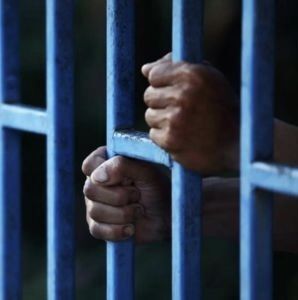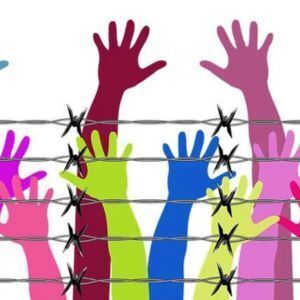Photo by Mika Baumeister on Unsplash
In a real sense all life is inter-related. All men are caught in an inescapable network of mutuality, tied in a single garment of destiny. Whatever affects one directly, affects all indirectly. I can never be what I ought to be until you are what you ought to be, and you can never be what you ought to be until I am what I ought to be.…This is the inter- related structure of reality.
~ Rev. Dr. Martin Luther King, Jr.
Restorative justice is a philosophy and approach to addressing harm, conflict, and crime that focuses on repairing relationships, promoting healing, and restoring the well- being of individuals and communities. Here's are some things you need to know about restorative justice and its practices:
- Definition: Restorative justice is an alternative to punitive justice systems that prioritizes the needs of victims, offenders, and communities. It seeks to address the harm caused by a wrongdoing by involving all stakeholders in a collaborative process that encourages accountability, empathy, and understanding.
- Core Principles: Restorative justice is guided by several core principles, including:
- Encounter: Facilitating face-to-face or indirect communication between the victim and offender to promote understanding and empathy.
- Inclusion: Involving all affected parties, such as community members, families, and support networks, in the restorative process.
- Repair: Focusing on addressing the harm caused by the wrongdoing and seeking ways to repair the damage to individuals and relationships.
- Transformation: Aiming for positive personal growth and learning experiences for offenders, emphasizing their responsibility to make amends and reintegrate into the community.
- Participation: Encouraging active participation and voice from all stakeholders involved, giving them a say in the resolution process.
- Encounter: Facilitating face-to-face or indirect communication between the victim and offender to promote understanding and empathy.
- Restorative Justice Practices: Restorative justice practices can take various forms, including:
- Victim-Offender Mediation: Facilitating dialogue between victims and offenders, providing an opportunity for them to share their experiences, ask questions, express emotions, and work towards understanding and healing.
- Circle Processes: Bringing together the affected parties, community members, and trained facilitators in a circle format to discuss the impact of the wrongdoing, share perspectives, and collaboratively develop solutions.
- Restorative Conferences: Structured meetings involving victims, offenders, supporters, and community members to address more significant conflicts or harms. Participants work together to develop a plan for repairing harm and preventing future incidents.
- Restorative Practices in Schools: Implementing restorative approaches within educational settings to address conflicts, build relationships, and foster a positive school climate. This can include peer mediation, restorative circles, and community-building activities.
- Victim-Offender Mediation: Facilitating dialogue between victims and offenders, providing an opportunity for them to share their experiences, ask questions, express emotions, and work towards understanding and healing.
- Benefits of Restorative Justice: Restorative justice offers seveveral benefits, including:
-
Victim Empowerment: Providing victims with a voice, validation, and an active role in the resolution process, empowering them to express their needs and seek meaningful justice.
- Offender Accountability and Reintegration: Encouraging offenders to take responsibility for their actions, make amends, and reintegrate into the community through personal growth and behavior change.
- Community Healing: Promoting community healing by addressing the underlying causes of harm, restoring relationships, and strengthening social connections.
- Reduction in Recidivism: Research suggests that restorative justice practices have the potential to reduce recidivism rates by addressing the root causes of offending behavior and promoting positive change.
-
Victim Empowerment: Providing victims with a voice, validation, and an active role in the resolution process, empowering them to express their needs and seek meaningful justice.
- Implementation Challenges: While restorative justice has shown promise, its successful implementation requires adequate training, resources, and commitment from stakeholders. It may face challenges such as ensuring equal participation, managing power dynamics, and addressing cases involving severe offenses or vulnerable populations.
Restorative justice offers a transformative approach to addressing harm and conflict by emphasizing healing, accountability, and community engagement. By shifting the focus from punishment to restoration, it seeks to build stronger, more inclusive communities where individuals can learn from their mistakes, repair relationships, and move forward in a positive way.
Mission
Work with compassionate communities and initiatives to increase their knowledge about restorative justice programs, practices and policies.
Vision
Assure that Restorative Justice programs and practices involves establishing specific goals and implementing strategies that prioritize restoration, accountability, and building a positive community involvement and healthy communications plan.
Goals
- Repair Harm: The primary goal of a restorative justice program is to repair the harm caused by the offense. This includes addressing the needs of both the victim and the offender, promoting healing, and restoring relationships within the school community.
- Seek Accountability: Restorative justice emphasizes holding individuals accountable for their actions in a meaningful way. The program should aim to help offenders take responsibility for their behavior, understand the impact of their actions, and make amends to the affected parties.
- Provide Skill Building: A restorative justice program can provide opportunities for skill-building and personal growth for all participants. This may involve developing conflict resolution skills, communication skills, empathy, and understanding of others' perspectives.
- Point to Avenues of Success: Beyond addressing individual incidents, a restorative justice program can contribute to preventing future infractions. By promoting empathy, fostering a positive school climate, and educating students about restorative practices, the program can help create a culture of respect, responsibility, and accountability.
Strategies
- Training and Education: Implement comprehensive training programs for school staff, administrators, and teachers to understand restorative justice principles, practices, and techniques. This training should cover areas such as facilitating restorative circles, active listening, effective communication, and conflict resolution.
- Restorative Circles and Conferences: Conduct restorative circles or conferences as a central component of the program. These processes bring together the victim, offender, and affected community members in a facilitated dialogue to address the harm, explore the impact, and collectively determine ways to repair relationships and restore the community.
- Supportive Structures: Establish supportive structures within the school to ensure the sustainability and effectiveness of the program. This may involve designating staff members as restorative justice coordinators, creating dedicated spaces for restorative processes, and integrating restorative practices into the school's disciplinary policies and procedures.
- Community Engagement: Engage parents, guardians, and the wider community in the restorative justice program. Foster collaboration and partnerships with community organizations, restorative justice practitioners, and local justice agencies to provide resources, expertise, and ongoing support.
- Ongoing Evaluation and Improvement: Regularly evaluate the effectiveness of the restorative justice program and make adjustments as needed. Collect feedback from participants, track outcomes, and use data to inform program development and improvement.
- Restorative Classroom Practices: Extend the principles of restorative justice beyond individual incidents by integrating restorative practices into daily classroom routines and interactions. This includes promoting open dialogue, community-building activities, and fostering a sense of belonging among students.







